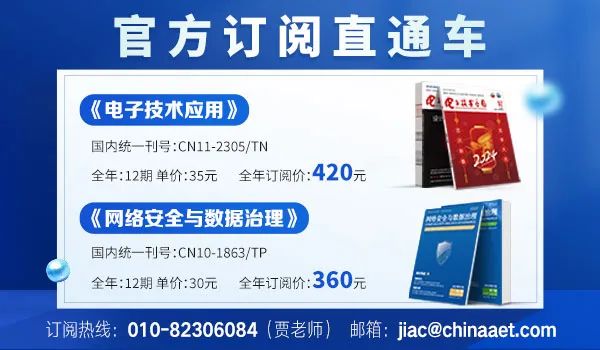In 2024, the semiconductor market has achieved significant recovery and rapid growth driven by fields such as AI, consumer electronics, automotive electronics, and industrial automation. The recovery signals for analog chips are evident. Will the semiconductor market continue to maintain its growth trend in 2025, and which subfields such as automotive semiconductors and industrial automation are worth looking forward to? Recently, Texas Instruments introduced its outlook and future development strategy to our reporters. Six New Products to Support Continuous Business GrowthTMS320F28P55X Series: This series integrates an edge AI neural processing unit (NPU), providing 24 high-precision PWM channels and up to 39 ADC channels. The TMS320F28P55X is the first in the C2000 series to introduce an NPU, addressing the trend of achieving smarter real-time control in current industrial and automotive real-time control systems. This product has been applied in arc detection, helping to reduce system costs and shrink system size; it can also be used for motor drive fault detection, achieving a fault detection accuracy of up to 99%.New F29H85x Series: A product equipped with the new C29 core, which is a significant update after 23 years, with a processing bit width increased from 32 bits to 64 bits, and equipped with a super-long instruction-level architecture that allows up to 8 instructions to be executed in parallel in a single instruction cycle. This improvement increases the basic computational performance by more than 2 times compared to C28. For example, the FFT performance of C29 is 5 times better than that of C28; for mathematical operations required for motor control, the average performance of C29 is 1.8 times that of C28; for some mathematical operations in digital power conversion, the computational performance of C29 is 2.8 times that of C28. The F29H85x can be widely used in various real-time control fields. For instance, in the integrated architecture of automotive OBC (on-board charger), DC/DC converters, and main MCU, multi-motor traction inverters, power structures, online UPS, and robotics. Additionally, the F29H85x series naturally supports two major safety domains: functional safety and information security, achieving automotive safety integrity level ASIL-D and SIL-3.Ultra-Compact DLP® Display Controller: The DLPC8445 display controller measures only 9mm × 9mm, a 90% reduction in size compared to the previous generation, enabling compact designs for consumer applications such as home projectors, gaming projectors, and augmented reality glasses. Designers can replicate the immersive high-end gaming display experience with significantly reduced size, achieving sub-millisecond display latency and frame rates up to 240Hz.Power Module Products Using MagPack Magnetic Packaging Technology: Texas Instruments launched six new power modules in 2024 that utilize its proprietary magnetic packaging technology—MagPack—to provide engineers with compact and efficient solutions. Compared to previous products, the size of the power modules has been reduced by up to 23%; while maintaining the same thermal performance, the power density of the power modules has doubled. MagPack employs Texas Instruments’ unique 3D packaging molding process to minimize the height, width, and depth of the power modules, thereby reducing the size of the solution and increasing density, providing greater output power in a smaller space. Furthermore, this magnetic packaging technology uses a new proprietary design material to create integrated power inductors. By using such power modules, engineers can more easily achieve high power density, low temperature, low EMI radiation, and high conversion efficiency in power system designs. Among them, three ultra-compact 6A power modules (TPSM82866A, TPSM82866C, and TPSM82816) can provide a current output capability of 1A per square millimeter, reducing electromagnetic interference (EMI) radiation by 8dB while improving efficiency by up to 4%. For the TPSM82816 model, efficiency has improved by 4% compared to the previous generation, thermal resistance has decreased by 17%, and the safe operating temperature range has increased by 10 degrees, marking a significant leap. The MagPack technology effectively enhances the power density, efficiency, and thermal performance of power modules, improving usability while reducing electromagnetic interference in industrial, enterprise, and communication applications, helping power designers adapt to the power development trend that reshapes the industry landscape by efficiently providing greater output power in smaller spaces.DRV7308 GaN Smart Power Module: By adopting Gallium Nitride (GaN) technology, engineers can achieve over 99% driver efficiency and improve the heat generation of motor drive systems without the need for external heat sinks; compared to existing IGBT and MOSFET solutions, power loss is reduced by 50%, and the PCB size of motor drive inverters can be reduced by up to 55%. Additionally, it achieves industry-low dead time and propagation delay (both less than 200ns), supporting higher pulse width modulation switching frequencies, thereby reducing audible noise and system vibration. In line with the trend of miniaturization in home appliances, the DRV7308 is aimed at 150W to 250W motor driver applications, helping to address many design and performance trade-offs that engineers typically face when designing large home appliances and heating, ventilation, and air conditioning (HVAC) systems, enhancing system efficiency and reliability.AWR2544 Single-Chip Radar Sensor: Texas Instruments launched the AWR2544 single-chip radar sensor in 2024. It is the industry’s first radar sensor designed for satellite architecture. In satellite architecture, the radar sensor uses sensor fusion algorithms to output partially processed data to the central processor for ADAS decision-making, utilizing a 360-degree sensor coverage to achieve higher levels of vehicle safety. The AWR2544 single-chip radar sensor also employs waveguide interface packaging (LOP) technology. LOP technology supports the installation of a 3D waveguide antenna on the opposite side of the printed circuit board, helping to reduce the sensor size by up to 30%. LOP technology also supports extending the sensor range to over 200m with a single chip. In satellite architecture, these features can help automotive manufacturers enhance the intelligence level of ADAS to improve vehicle autonomy, enabling more informed decisions at greater distances.Automotive Semiconductors Drive Automotive Innovation Alongside SDVThe intelligence, connectivity, and softwareization of vehicles bring new opportunities and challenges to the industry. Texas Instruments leverages decades of experience in the automotive field to support the realization of safer, smarter, and more sustainable automotive systems through analog and embedded innovation technologies. Currently, the proportion of semiconductor components in vehicles continues to rise, and this growth momentum shows no signs of slowing down. Texas Instruments is extensively involved in various fields of automotive electronic systems, committed to providing diverse products to align with market trends and customer needs. Texas Instruments will collaborate with major automotive manufacturers to jointly drive automotive innovation forward.Software-defined vehicles are a major trend in the automotive market. This is a vehicle controlled by software rather than hardware, allowing manufacturers to improve vehicles over time and provide new experiences and customization for drivers and passengers. Software-defined vehicles centralize software and decouple hardware from software, enabling rapid innovation. Software utilizes data from processors, microcontrollers (MCUs), and sensors to optimize overall vehicle performance and enhance safety, such as advanced driver assistance systems (ADAS) or battery monitoring and customization. As the industry designs chips become smarter and programmable or modifiable to adopt new features, design engineers must write software for them.Regional architecture is another trend in the automotive field that helps achieve software-defined vehicles. Unlike domain architecture, which groups electronic control units (ECUs) based on their functions in the vehicle, regional architecture groups them based on their locations in the vehicle. These location-based ECUs (also known as regional control modules) utilize existing and new network interfaces, aiming to centralize the vehicle’s hardware and software architecture. With regional architecture supporting the vision of software-defined vehicles, automotive manufacturers are redefining the next stage of driver personalization, safety, and convenience. As the number of sensors and actuators in vehicles increases, the amount of data that needs to be transmitted within the vehicle is also increasing. Each ECU needs to communicate with sensors, actuators, and other ECUs to accurately execute motion and safety functions. Fortunately, regional architecture reduces wiring, weight, and costs, thereby better optimizing software-defined vehicles.Edge AI Applications Will Become More WidespreadIntegrating edge AI into everyday applications will improve our lives, making products easier to use, safer, and more efficient. In factories, edge AI can enable motor fault detection. By capturing motor faults before they cause damage to the entire system, predictive maintenance patterns can be established, leading to more reliable, efficient, and cost-effective operations. In the renewable energy sector, solar panels integrated with edge AI can shut down before ignition in the system through fault detection and surge prevention, enhancing system safety and promoting the widespread use of renewable energy.Connectivity Technologies Supporting Factory Communication Will Become More ImportantWith the development of Industry 4.0, digitization, communication, and automation can effectively enhance factory productivity and meet the growing future demands. At the same time, it becomes crucial to use wired and wireless technologies to address various challenges in interconnected factories while ensuring simplicity, scalability, and security. With TI’s communication technology, access to critical data can be achieved, supporting dynamic adjustments to process flows in factories. Creating high-performance smart factories while meeting the latest industrial standards.The Texas Instruments SimpleLink™ CC2340 wireless MCU series offers high-quality RF and power performance at an economical price, allowing users to quickly and easily add low-power Bluetooth to more applications. Among them, the Texas Instruments CC2340R5 microcontroller features an outstanding standby current of less than 710 nA, helping to extend battery life; with 512 KB of flash memory, it provides engineers with excellent flexibility and ample code application space. As one of Texas Instruments’ new wireless microcontroller (MCU) series, the Texas Instruments CC2345R5 microcontroller also supports engineers in expanding RF performance and connectivity range. With larger memory, longer battery life, and wider temperature range, engineers can economically achieve more everyday connected applications such as medical devices, building automation, and personal care.Connectivity technologies aimed at regional architecture trends. Regional architecture is a trend that can help achieve software-defined vehicles, where regional control modules can centralize the vehicle’s hardware and software architecture by utilizing existing and new network interfaces. This includes Ethernet communication technology, high-speed serial bus technology, video interface technology, isolation technology, low-power Bluetooth technology, and USB Type-C solutions.
Six New Products to Support Continuous Business GrowthTMS320F28P55X Series: This series integrates an edge AI neural processing unit (NPU), providing 24 high-precision PWM channels and up to 39 ADC channels. The TMS320F28P55X is the first in the C2000 series to introduce an NPU, addressing the trend of achieving smarter real-time control in current industrial and automotive real-time control systems. This product has been applied in arc detection, helping to reduce system costs and shrink system size; it can also be used for motor drive fault detection, achieving a fault detection accuracy of up to 99%.New F29H85x Series: A product equipped with the new C29 core, which is a significant update after 23 years, with a processing bit width increased from 32 bits to 64 bits, and equipped with a super-long instruction-level architecture that allows up to 8 instructions to be executed in parallel in a single instruction cycle. This improvement increases the basic computational performance by more than 2 times compared to C28. For example, the FFT performance of C29 is 5 times better than that of C28; for mathematical operations required for motor control, the average performance of C29 is 1.8 times that of C28; for some mathematical operations in digital power conversion, the computational performance of C29 is 2.8 times that of C28. The F29H85x can be widely used in various real-time control fields. For instance, in the integrated architecture of automotive OBC (on-board charger), DC/DC converters, and main MCU, multi-motor traction inverters, power structures, online UPS, and robotics. Additionally, the F29H85x series naturally supports two major safety domains: functional safety and information security, achieving automotive safety integrity level ASIL-D and SIL-3.Ultra-Compact DLP® Display Controller: The DLPC8445 display controller measures only 9mm × 9mm, a 90% reduction in size compared to the previous generation, enabling compact designs for consumer applications such as home projectors, gaming projectors, and augmented reality glasses. Designers can replicate the immersive high-end gaming display experience with significantly reduced size, achieving sub-millisecond display latency and frame rates up to 240Hz.Power Module Products Using MagPack Magnetic Packaging Technology: Texas Instruments launched six new power modules in 2024 that utilize its proprietary magnetic packaging technology—MagPack—to provide engineers with compact and efficient solutions. Compared to previous products, the size of the power modules has been reduced by up to 23%; while maintaining the same thermal performance, the power density of the power modules has doubled. MagPack employs Texas Instruments’ unique 3D packaging molding process to minimize the height, width, and depth of the power modules, thereby reducing the size of the solution and increasing density, providing greater output power in a smaller space. Furthermore, this magnetic packaging technology uses a new proprietary design material to create integrated power inductors. By using such power modules, engineers can more easily achieve high power density, low temperature, low EMI radiation, and high conversion efficiency in power system designs. Among them, three ultra-compact 6A power modules (TPSM82866A, TPSM82866C, and TPSM82816) can provide a current output capability of 1A per square millimeter, reducing electromagnetic interference (EMI) radiation by 8dB while improving efficiency by up to 4%. For the TPSM82816 model, efficiency has improved by 4% compared to the previous generation, thermal resistance has decreased by 17%, and the safe operating temperature range has increased by 10 degrees, marking a significant leap. The MagPack technology effectively enhances the power density, efficiency, and thermal performance of power modules, improving usability while reducing electromagnetic interference in industrial, enterprise, and communication applications, helping power designers adapt to the power development trend that reshapes the industry landscape by efficiently providing greater output power in smaller spaces.DRV7308 GaN Smart Power Module: By adopting Gallium Nitride (GaN) technology, engineers can achieve over 99% driver efficiency and improve the heat generation of motor drive systems without the need for external heat sinks; compared to existing IGBT and MOSFET solutions, power loss is reduced by 50%, and the PCB size of motor drive inverters can be reduced by up to 55%. Additionally, it achieves industry-low dead time and propagation delay (both less than 200ns), supporting higher pulse width modulation switching frequencies, thereby reducing audible noise and system vibration. In line with the trend of miniaturization in home appliances, the DRV7308 is aimed at 150W to 250W motor driver applications, helping to address many design and performance trade-offs that engineers typically face when designing large home appliances and heating, ventilation, and air conditioning (HVAC) systems, enhancing system efficiency and reliability.AWR2544 Single-Chip Radar Sensor: Texas Instruments launched the AWR2544 single-chip radar sensor in 2024. It is the industry’s first radar sensor designed for satellite architecture. In satellite architecture, the radar sensor uses sensor fusion algorithms to output partially processed data to the central processor for ADAS decision-making, utilizing a 360-degree sensor coverage to achieve higher levels of vehicle safety. The AWR2544 single-chip radar sensor also employs waveguide interface packaging (LOP) technology. LOP technology supports the installation of a 3D waveguide antenna on the opposite side of the printed circuit board, helping to reduce the sensor size by up to 30%. LOP technology also supports extending the sensor range to over 200m with a single chip. In satellite architecture, these features can help automotive manufacturers enhance the intelligence level of ADAS to improve vehicle autonomy, enabling more informed decisions at greater distances.Automotive Semiconductors Drive Automotive Innovation Alongside SDVThe intelligence, connectivity, and softwareization of vehicles bring new opportunities and challenges to the industry. Texas Instruments leverages decades of experience in the automotive field to support the realization of safer, smarter, and more sustainable automotive systems through analog and embedded innovation technologies. Currently, the proportion of semiconductor components in vehicles continues to rise, and this growth momentum shows no signs of slowing down. Texas Instruments is extensively involved in various fields of automotive electronic systems, committed to providing diverse products to align with market trends and customer needs. Texas Instruments will collaborate with major automotive manufacturers to jointly drive automotive innovation forward.Software-defined vehicles are a major trend in the automotive market. This is a vehicle controlled by software rather than hardware, allowing manufacturers to improve vehicles over time and provide new experiences and customization for drivers and passengers. Software-defined vehicles centralize software and decouple hardware from software, enabling rapid innovation. Software utilizes data from processors, microcontrollers (MCUs), and sensors to optimize overall vehicle performance and enhance safety, such as advanced driver assistance systems (ADAS) or battery monitoring and customization. As the industry designs chips become smarter and programmable or modifiable to adopt new features, design engineers must write software for them.Regional architecture is another trend in the automotive field that helps achieve software-defined vehicles. Unlike domain architecture, which groups electronic control units (ECUs) based on their functions in the vehicle, regional architecture groups them based on their locations in the vehicle. These location-based ECUs (also known as regional control modules) utilize existing and new network interfaces, aiming to centralize the vehicle’s hardware and software architecture. With regional architecture supporting the vision of software-defined vehicles, automotive manufacturers are redefining the next stage of driver personalization, safety, and convenience. As the number of sensors and actuators in vehicles increases, the amount of data that needs to be transmitted within the vehicle is also increasing. Each ECU needs to communicate with sensors, actuators, and other ECUs to accurately execute motion and safety functions. Fortunately, regional architecture reduces wiring, weight, and costs, thereby better optimizing software-defined vehicles.Edge AI Applications Will Become More WidespreadIntegrating edge AI into everyday applications will improve our lives, making products easier to use, safer, and more efficient. In factories, edge AI can enable motor fault detection. By capturing motor faults before they cause damage to the entire system, predictive maintenance patterns can be established, leading to more reliable, efficient, and cost-effective operations. In the renewable energy sector, solar panels integrated with edge AI can shut down before ignition in the system through fault detection and surge prevention, enhancing system safety and promoting the widespread use of renewable energy.Connectivity Technologies Supporting Factory Communication Will Become More ImportantWith the development of Industry 4.0, digitization, communication, and automation can effectively enhance factory productivity and meet the growing future demands. At the same time, it becomes crucial to use wired and wireless technologies to address various challenges in interconnected factories while ensuring simplicity, scalability, and security. With TI’s communication technology, access to critical data can be achieved, supporting dynamic adjustments to process flows in factories. Creating high-performance smart factories while meeting the latest industrial standards.The Texas Instruments SimpleLink™ CC2340 wireless MCU series offers high-quality RF and power performance at an economical price, allowing users to quickly and easily add low-power Bluetooth to more applications. Among them, the Texas Instruments CC2340R5 microcontroller features an outstanding standby current of less than 710 nA, helping to extend battery life; with 512 KB of flash memory, it provides engineers with excellent flexibility and ample code application space. As one of Texas Instruments’ new wireless microcontroller (MCU) series, the Texas Instruments CC2345R5 microcontroller also supports engineers in expanding RF performance and connectivity range. With larger memory, longer battery life, and wider temperature range, engineers can economically achieve more everyday connected applications such as medical devices, building automation, and personal care.Connectivity technologies aimed at regional architecture trends. Regional architecture is a trend that can help achieve software-defined vehicles, where regional control modules can centralize the vehicle’s hardware and software architecture by utilizing existing and new network interfaces. This includes Ethernet communication technology, high-speed serial bus technology, video interface technology, isolation technology, low-power Bluetooth technology, and USB Type-C solutions.
Source | Electronic Technology Application Official Website
Recommended Reading—— In 2025, major chip manufacturers will collectively change CEOs! Breaking news! The Trump administration will comprehensively ban AI chips! Breaking news! IBM China ceases operations, 1800 people unemployed! It is reported that China will introduce policies for the first time to promote the nationwide use of open-source RISC-V chips ☞ Business Cooperation: ☏ Please call 010-82306118 / ✐ Or send an email to [email protected]
☞ Business Cooperation: ☏ Please call 010-82306118 / ✐ Or send an email to [email protected]
